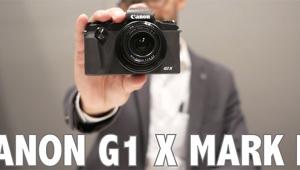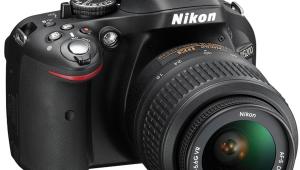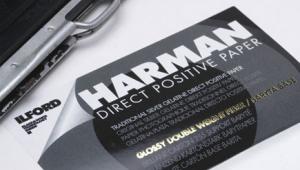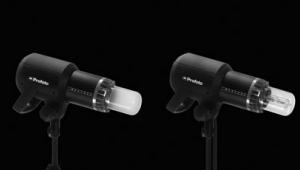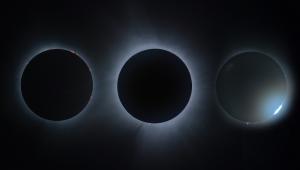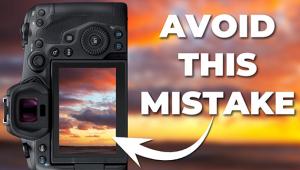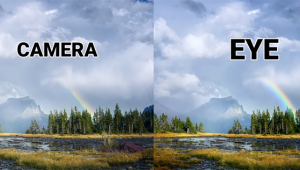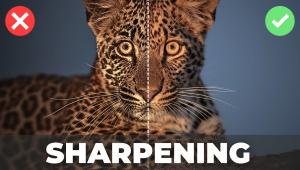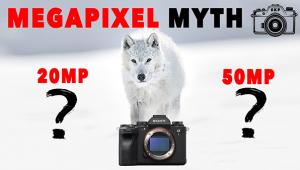Special Report: photokina
New Lenses For 35mm And Digital SLR Cameras Page 2
The latest in the digitally-optimized series of Tamron Di lenses, the new AF28-300mm
f/3.5-6.3 XR Di LD Aspherical (IF) Macro zoom should be even more popular than
its predecessors. Billed as the smallest and lightest in its range, this Di
zoom includes a new optical formula, with extra refractive index, aspherical
and low dispersion elements to correct all types of aberrations plus superior
multilayered coatings. Aside from the versatility offered by the wide range
of focal lengths, the close focusing ability is also impressive, allowing for
a maximum magnification ratio of 1:2.9 with a film camera and even higher with
a digital SLR with a smaller sensor. The lens is smaller (62mm filter size)
and lighter than previous Tamron 28-300mm models, making it even more portable
and ideal as an all-purpose zoom. (Street price, $399 in Canon, Minolta D, Nikon
D, and Pentax AF mounts.) For more information, visit Tamron's website
at: www.tamron.com.
Recently, Pentax (www.pentaxusa.com)
also announced that it would market a series of digitally-optimized lenses.
The new D FA lenses will include superior coatings to control flare and new
optical formulas for high edge to edge sharpness and brightness. The first two
D FA lenses are both life-size macros capable of full 1x magnification with
superb quality thanks to high-tech focusing systems. The D FA 100mm f/2.8 Macro
and D FA 50mm f/2.8 Macro are substantially smaller (49mm filter size) and lighter
than previous models thanks to new optical elements and durable yet lightweight
exterior components. A wide focusing ring assures fast, accurate focus in manual
focus, the most commonly used mode in macro photography. (Street prices, $799
and $599, respectively.)
 |
 |
A masterpiece of advanced technology, Nikon's new AF-S VR Nikkor 300mm f/2.8G IF-ED (www.nikonusa.com) is a water-resistant professional telephoto with some of the best features currently available, including three ED glass elements; Vibration Reduction system; ultrasonic Silent Wave Motor; internal focusing; and many focus options. This lens has been optimized for use with digital SLR cameras with steps that include a meniscus protective glass element to overcome internal reflections from digital sensors and an entirely new Nano-Crystal AR coating. Described as "revolutionary," the technology employs a new type of microscopic-sized crystallized particles. When applied to certain lens elements they're said to exhibit extra-low refractive index properties for extremely low levels of reflection, across a much wider wavelength, to effectively minimize flare, ghosting, and loss of light. We expect that Nano-Crystal AR coating will probably be used on additional pro Nikon lenses in the future. (Estimated street price, $4500.)
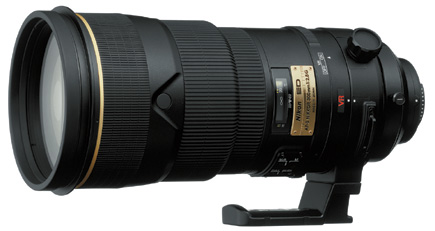
Because Konica Minolta (http://konicaminolta.us)
only announced a digital SLR camera recently, the company has made only two
digitally-optimized multi-platform lenses, both first shown at photokina. (I
have not yet been able to obtain specifics on their digital-optimi zation strategies
but the company states, "these two new lenses have been designed specifically
with the Maxxum 7D in mind." My investigation is continuing.) The new
AF 17-35mm f/2.8-4 D boasts one low dispersion and three aspherical elements
while the 28-75mm f/2.8 D includes three low dispersion plus four aspherical
elements. As "D" lenses, they include the chip necessary for Advanced
Distance Integration (ADI) flash metering for superior exposures with difficult
subjects, when using the latest Maxxum cameras' built-in flash or with
certain accessory Maxxum flash units. The 17-35mm zoom is a bit large/heavy
(77mm filter size; 18 oz) and expensive while the "fast" 28-75mm
zoom is smaller, a tad lighter (67mm filter size, 15 oz), and more affordable.
(Prices not yet set.) When used with the Maxxum 7D these zooms provide an equivalent
focal length of 26-53mm and 42-113mm, respectively.
Lenses Exclusively For Digital SLRs
Quickly becoming the new standard, at least for most new zooms, lenses intended
for use only with digital SLR cameras are designed to suit the APS-C size sensors.
That format actually varies in exact size with Sigma using the smallest sensor,
Canon using the next smallest sensor, and the others using a slightly larger
sensor. However, the actual difference in size is minimal, and the lens designers
have taken that into effect to ensure that their lenses will cover the image
circle of pertinent cameras.
During a photokina meeting, a question arose about the long-term suitability
of current lenses designed for APS-C size sensors. If the standard were changed
in the future, would all of the current lenses become incompatible? Well, that's
theoretically possible, but only if larger sensors became the norm. The current
digital-only lenses are quite suitable for any camera with a smaller than APS-C
sensor such as the Four Thirds size used by Olympus. Sigma's DC-series
lenses for example--and a few of those are already available in Olympus
mount--work well with the E-1 and new E-300 EVOLT. Naturally, if much larger
sensors became standard in future cameras, today's digital-only lenses
would become orphans as did the lenses designed exclusively for APS format film
SLRs.
Sigma's new 18-50mm F2.8 EX DC zoom for digital SLRs with APS-C size sensors
is both compact (67mm filter size) and lightweight (15.7 oz) in spite of the
ultra-wide f/2.8 aperture. It's also a premium-grade lens with one low
dispersion plus two aspherical elements as well as SML coating to reduce flare
and ghosting caused by highly reflective digital sensors. According to Sigma,
the lens also features "excellent correction for vignetting and superior
peripheral brightness is ensured." (Street price, $649 in Sigma, Canon,
or Nikon (D) AF mount.)

Tamron has also started making lenses intended exclusively for digital SLR cameras,
with the first two Di II models to be available this spring. All Di II lenses
are designed for enhanced peripheral illumination (to minimize vignetting) and
include various countermeasures against internal flare, including new types
of multilayered coatings on more lens elements. The optical system ensures that
light strikes the CCD or CMOS sensor at an optimal angle for high edge to edge
sharpness at any focal length. The SP AF11-18mm f/4.5-5.6 Di-II LD Aspherical
IF (17-28mm equivalent) is particularly impressive with its three aspherical
elements plus high index/high dispersion glass and low dispersion optical elements
to correct distortion and all types of aberrations. The new AF18-200mm f/3.5-6.3
XR Di-II LD Aspherical IF Macro (28-300mm equivalent) is larger than expected
considering its small maximum apertures. (It's roughly the size of the
multi-platform 28-300mm zoom and requires 62mm filters.) This one includes Extra
Refractive glass, three aspherical elements plus two low dispersion elements
to produce great image quality. (Estimated street price, $549 US and $449 US
respectively.)
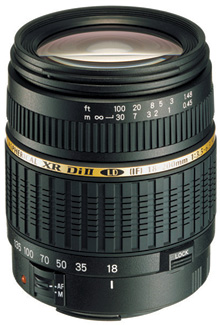
All of the Zuiko Digital lenses were designed specifically for the Olympus (www.olympusamerica.com) digital SLRs, so they incorporate the optical strategies required to produce fine image quality. Featuring a super wide 114Þ angle of view, the new ED 7-14mm f/4 (14-28mm equivalent) with protruding front element, is a rectilinear (not fisheye) lens. This "fast" professional zoom is splash and dust proof and features a unique, double-sided "ED glass molded aspherical lens" plus two Super ED and two ED glass elements. The 14-45mm f/3.5-5.6 (28-90mm equivalent) zoom is far more affordable, lightweight, and tiny (10 oz; 58mm filter size), but incorporates extensive multilayered coating plus high refractive index glass and two aspherical elements. The third Zuiko Digital lens, the 40-150mm f/3.5-4.5 (80-300mm equivalent) is available at an attractive price. Very small (58mm filter size) and lightweight (15.9 oz), this telephoto zoom does not incorporate high-tech optical elements but boasts extensive multilayered coating to minimize ghosting and flare. (Prices not yet set.)
 |
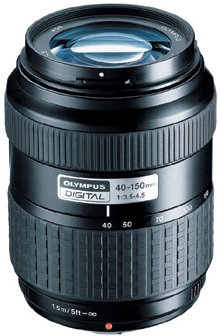 |
 |
|
- Log in or register to post comments




